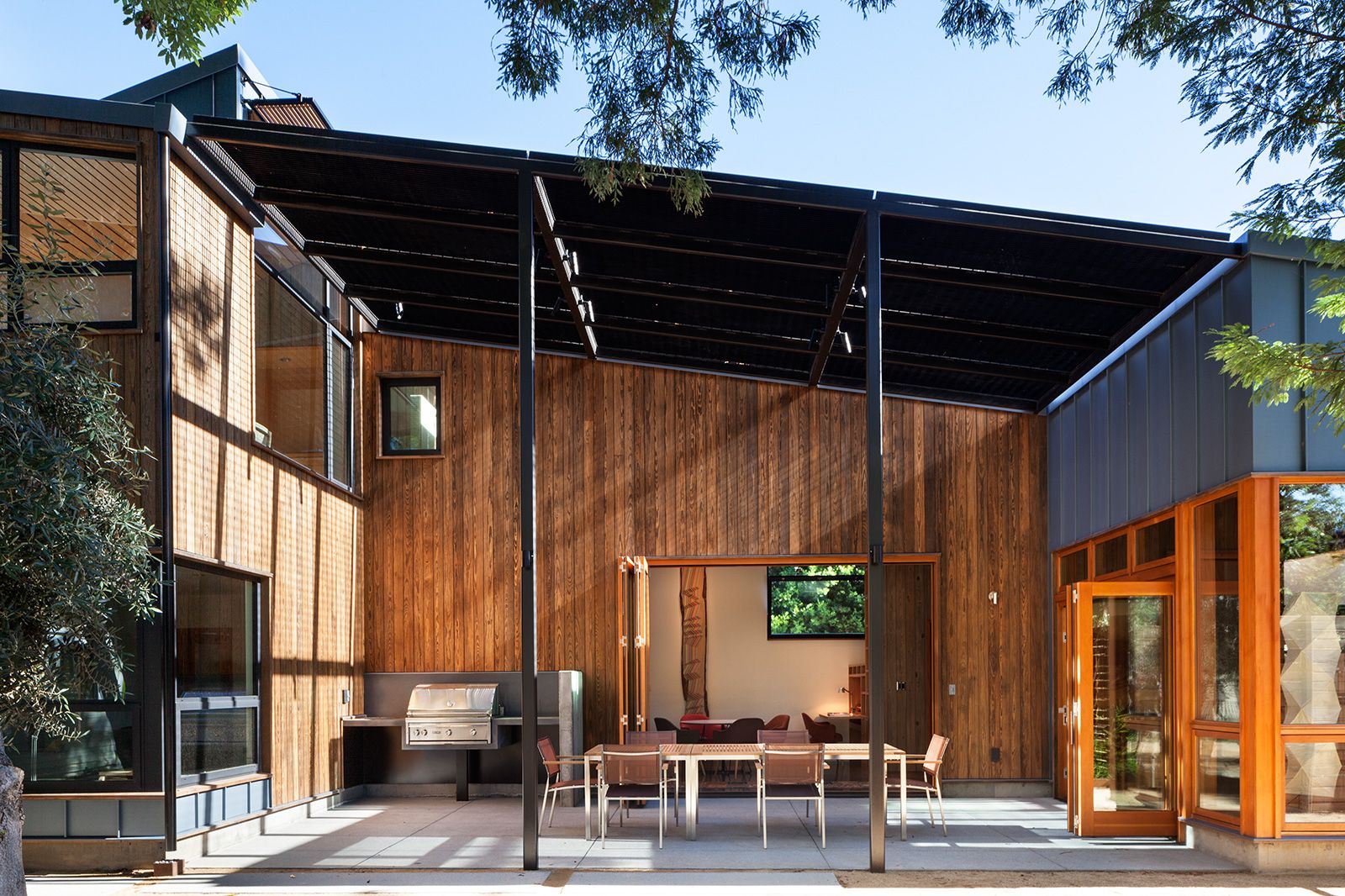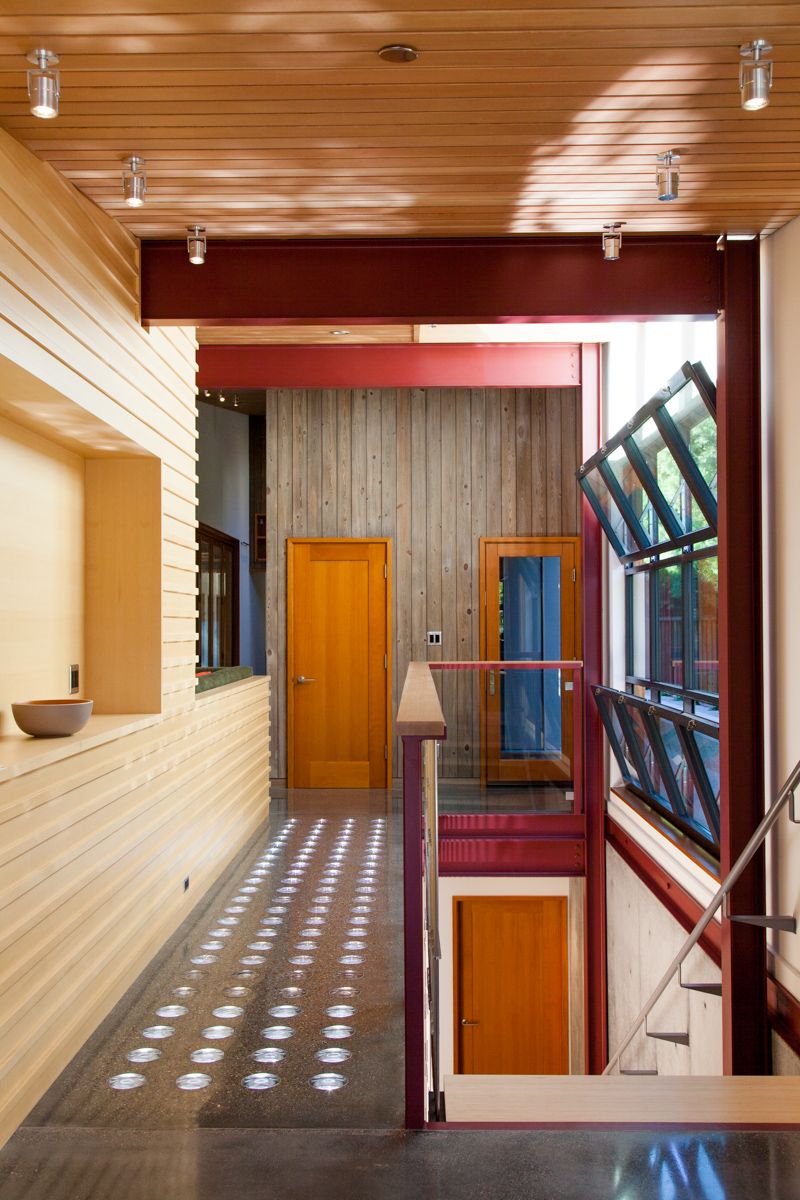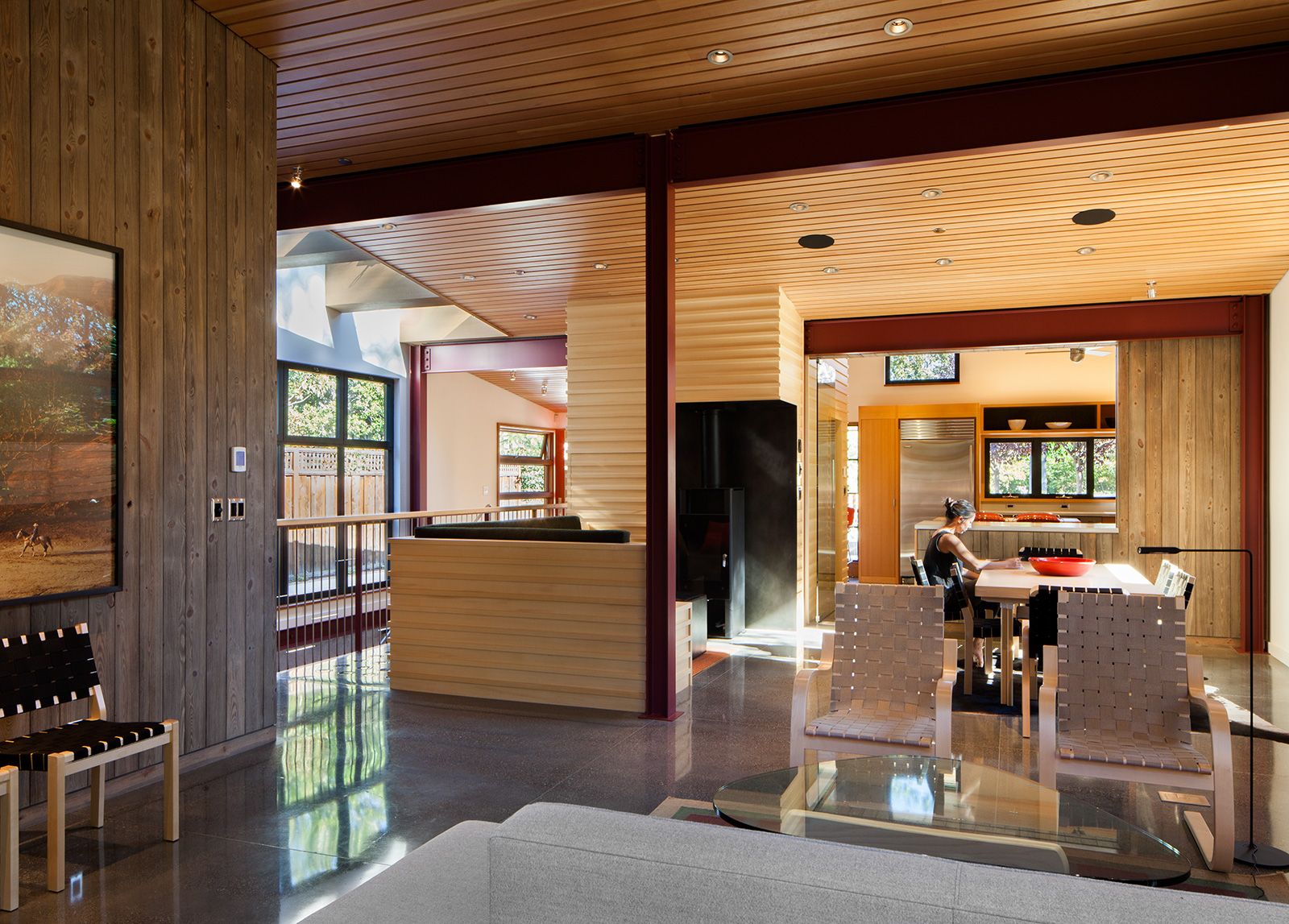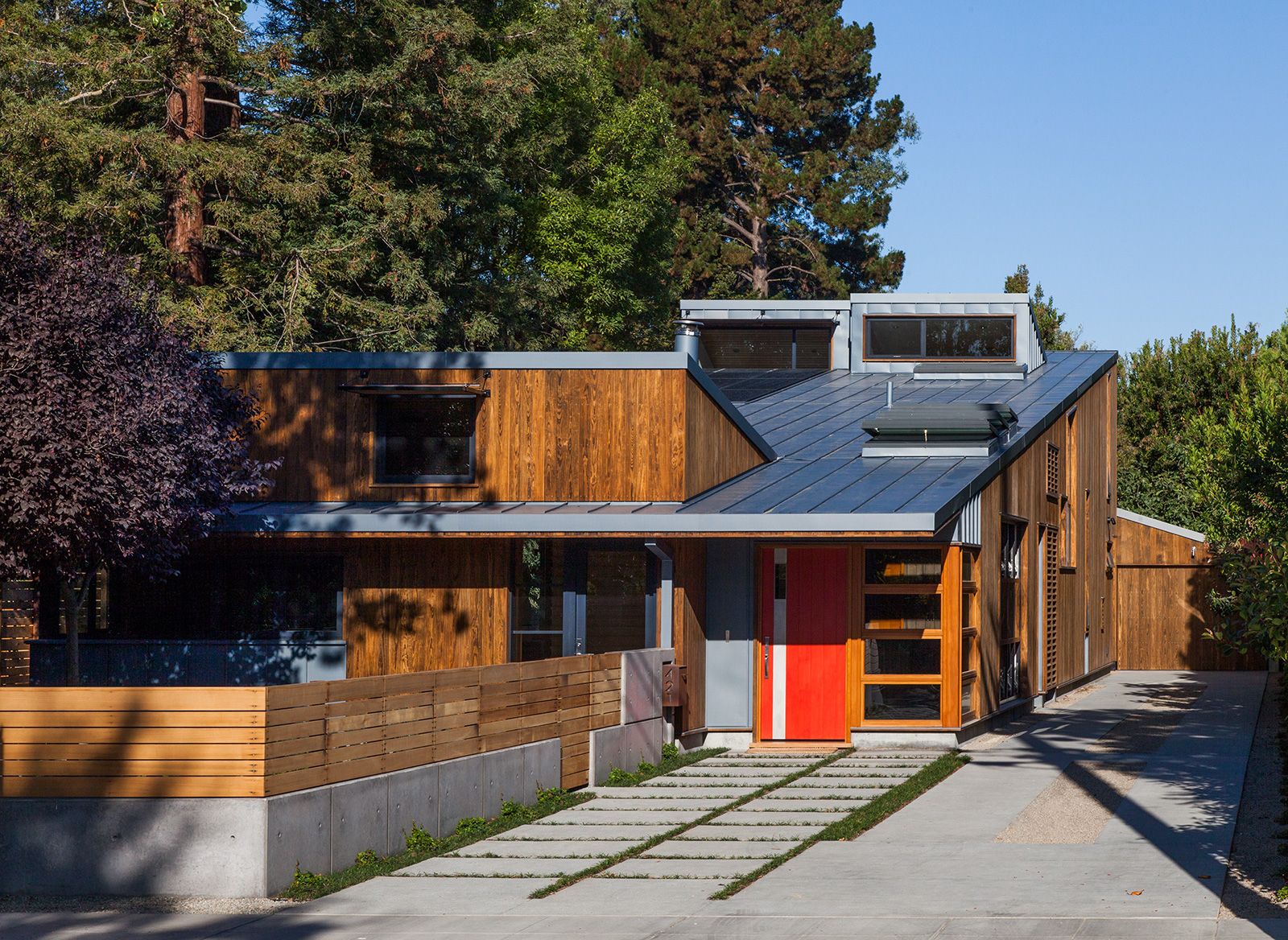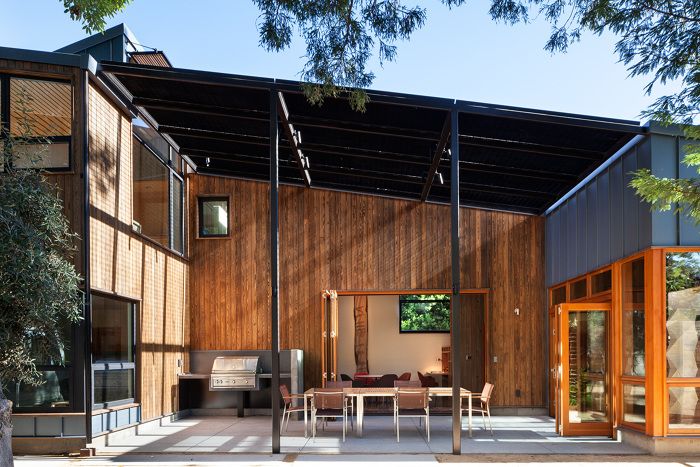
The Wedge House was designed to be slid onto the narrow leg of an L-shaped lot with frontage on two streets in an established suburban neighborhood in Palo Alto, Calif. Our clients, who occupied a large house on one leg of the L where they had raised a family, hired us to design a house on the adjacent leg. The landscape design is meant—at present—to weave the two houses together. A mostly unspoken assumption was that the new house could become a smaller, contemporary alternative to their old, three-story Victorian, though it was initially designed to accommodate extended family.
With triangular sections, the house is literally a wedge. Metaphorically it is also a wedge, bridging a series of oppositions: landscaping and architecture, light and shade, indoors and outdoors, and the warmth of wood against the coolness of steel and concrete.
One story at street level, the wedge house is the odd man out along a row of imposing, two-story, stucco Spanish-revival homes punctuated by an occasional Victorian. The functional shape slopes up to the northwest, interrupted by dormers and skylights that admit light and expel heat. To take advantage of the Mediterranean climate, the design includes three outdoor rooms that are defined by a combination of architectural and landscape elements, woven together to reinforce one another. The architecture defines planes, setting hard edges that act as foils to the landscape elements. In turn, the plantings provide shade, frame views, and create enclosure.
The house is organized from public to private as one moves from the street toward the back of the property. The front yard, which would traditionally be given over in suburbia to landscape buffer, is turned into social space for casual dining with a fruit-and-herb garden. This street-side kitchen garden receives morning light and is defined by a low concrete-and-wood wall. A shaded interior courtyard is carved out of the center of the wedge. Large openings in the wall blur the distinction between indoors and out, seamlessly integrating the interior court with the living room and study. At the rear of the site is a sculpture garden and workyard, protected from the harsh afternoon sun by a casual bosque of olive trees.
